14 Health Benefits of Vakrasana (Half Spinal Twist Pose) & Steps to Perform
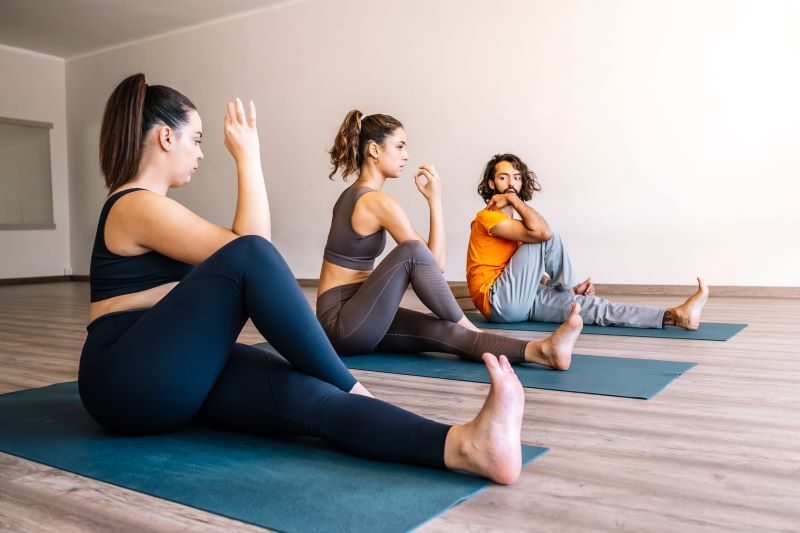
Every pose in yogase has its benefits, which aim to improve the practitioner's general health and well-being. Practising Vakrasana daily can have a positive effect on your mind and body. It improves blood sugar levels and reduces the risks of diabetes and heart disease. Further, this yoga pose stimulates the pancreas and combats digestive problems by regulating the secretion of digestive juices.
Moreover, read this article to learn more about this exercise and its benefits in managing weight and diabetes.

Table of Contents

What is Vakrasana (Half Spinal Twist)?
Vakrasana, or Half-Spinal Twist, is derived from the Sanskrit words 'Vakra', meaning 'twisted', and 'asana', meaning 'posture’. It is one of the most complex and flexible exerciss, requirinbending and curlingve your spine. However, this yoga posture is also termed a 'twisted pose' as it allows you to strengthen and stretch your spine and properly massage your abdominal areas.
Performing this exercise regularly will reduce various complications that may arise due to diabetes or other diseases. Now, let us see the benefits of the half-spinal twist pose.
How Often Can You Practise Vakrasana?
Optimally practised daily for maximum advantage in your yoga routine, ensure you do this position for 20-30 seconds on each side, repeating twice or thrice. Regular practising of this exercise will not only help boost spinal flexibility but also improve digestion. It also helps detoxification, promoting general, physical, and mental well-being.
Top 14 Health Benefits of Vakrasana
Vakrasana, also known as the twisted pose, is a very powerful yoga posture with many health benefits. The seated twist enhances physical flexibility, strength, mental clarity, and emotional stability. A deep dive into the top 14 health benefits of Vakrasana will drive home its profound influence on different aspects of your life.
Physical Benefits of Doing Vakrasana
1. Regulates Flow of Digestive Juices
As you perform the half spinal twist posture in a seated position, you must twist your trunk to both sides. This stimulates the pancreas and helps the flow of digestive juices into your body, which, in turn, eases the digestion process.
2. Increases Lung Capacity
The half-spinal twist pose allows you to sit straight and perform the exercise. This, in turn, allows your body to throw out the stagnated blood from the spinal area. However, this blood is then sent to the lungs and the heart for purification, enhancing lung capacity.
3. Effectively Treats Back Pain
Twisting and turning your body during these postures helps relieve back, neck, and head pain. However, as you perform this exercise daily, you will notice a significant change over time.
4. Reduces Lower Abdomen Issues
Practising half spinal twist will offer fantastic relief if you suffer from a menstrual disorder, constipation, or cervical pain. In addition, regularly practising this pose can reduce or prevent the occurrence of various abdominal issues.
5. Reduces Stiffness
If you have a stiff body, practising the half-spinal twist pose will induce flexibility as you twist and turn your body. Further, this will reduce the stiffness as you become more comfortable with your body.
6. Beneficial for Diabetic Patients
This yoga posture promises an effective massage to the lower abdominal regions and organs, including the pancreas. Therefore, your pancreas tends to secrete more insulin, which further controls the blood sugar levels in your body and helps prevent diabetes.
Mental Benefits of Vakrasana
7. Stress Relief
Vakrasana helps lower stress and anxiety levels by inducing deep breathing and relaxation. This posture also serves as a form of meditation that relaxes the nervous system, producing a sense of peace.
8. Improves Focus
The practice of Vakrasana calls for concentration and mindfulness, which can increase mental clarity and focus. For example, improved attention span due to this pose might be helpful at work or even during studies.
9. Aids Mental Peace
The pose promotes calmness, facilitating relaxation that, in turn, reduces fatigue related to mental processes, thus ensuring emotional stability. It will help us to better manage our emotions by improving overall mental health.
Other Benefits of Vakrasana
10. Strengthens Your Central Nervous System
This yoga pose strengthens your central nervous system. It also enhances neural function by stimulating nerves along the spinal cord, thus improving your overall neurological condition.
11. Promotes Urinary Health
By twisting the body, nutrients, oxygen, and blood can flow to the urinary organs, promoting a well-functioning urinary system. This improved blood circulation supports proper kidney and bladder function.
12. Improves Blood Circulation in the Entire Body
Through squeezing and stretching of the abdominal muscles in Vakrasana, good blood flow occurs throughout the body. Therefore, all body parts receive sufficient oxygen needed for normal functioning.
13. Good For Slipped Discs and Curing Sciatica
Slip discs have been treated using Vakrasana, with indications it is highly beneficial in treating sciatica patients. Back pressure relief comes from the twist that decompresses the spine, while pinching helps in pain.
13. Assures Healthy Adrenal Glands
Adrenal glands will stay healthy because of the movements involved in the posture twist. The adrenal glands are stimulated to maintain hormonal balances and handle stresses effectively.
Types of Vakrasana
Vakrasana, famous for its spinal twisting effects, has several variations, each offering different benefits at various levels of flexibility and strength.
1. Ardha Vakrasana (Half Spinal Twist Pose)
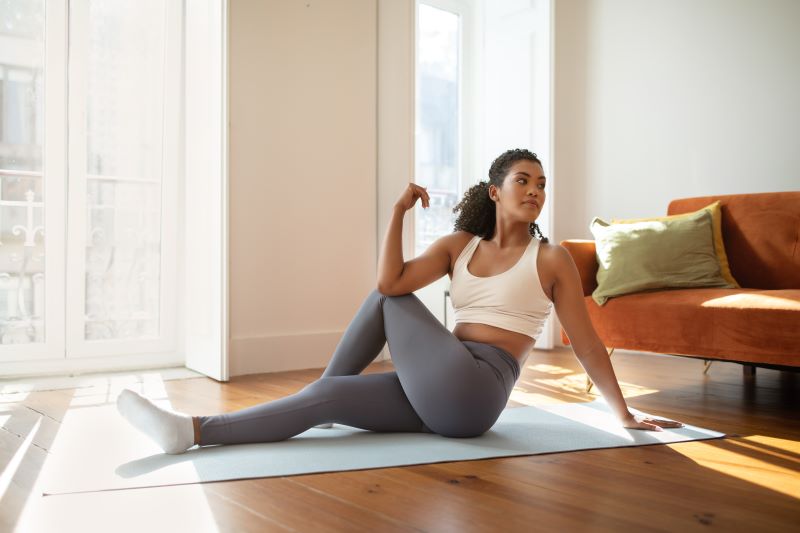
It is a basic form of Vakrasana that beginners can easily practise. Extend your legs while sitting and bend your right knee to the side. Now turn your trunk towards the right and tuck in the left elbow on the outside part of the right knee.
2. Parivrtta Vakrasana (Revolved Twist Pose)
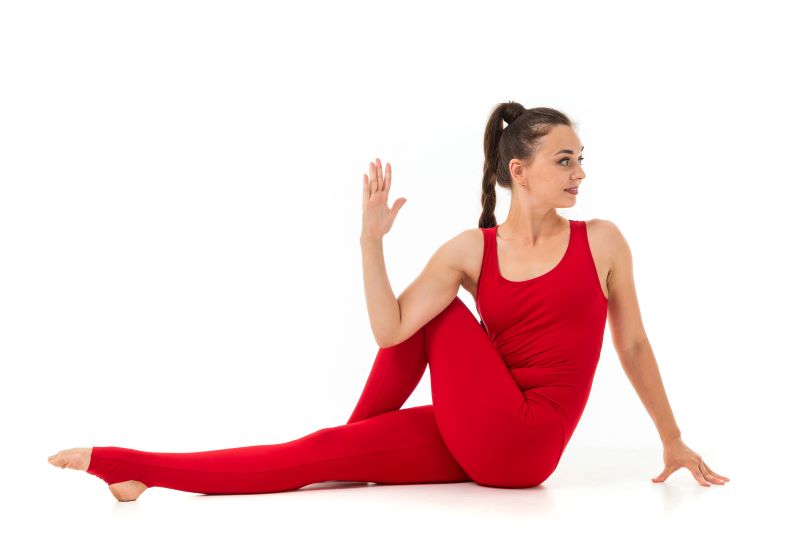
It offers a more powerful twist, hence deeper advantages. Sit with your legs extended forward and fold your right leg’s knee. Put back your right hand behind you and twist your torso to face towards your right, bringing the left elbow on the outside next to the right knee.
3. Supta Vakrasana (Supine Twist Pose)
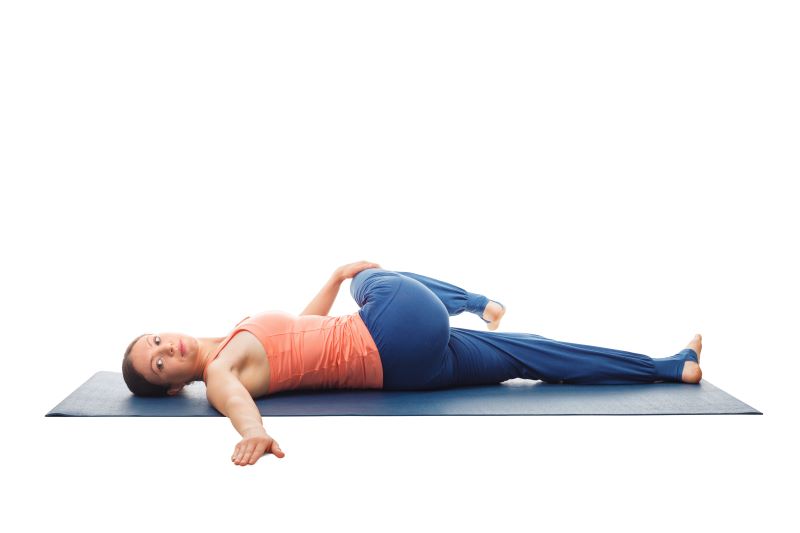
It is performed in a lying position, which makes it more calming and restorative. Lie flat on your back, bend both knees, and let them drop gently to one side while keeping your shoulders rooted.
4. Marichyasana C (Sage Marichi Pose C)
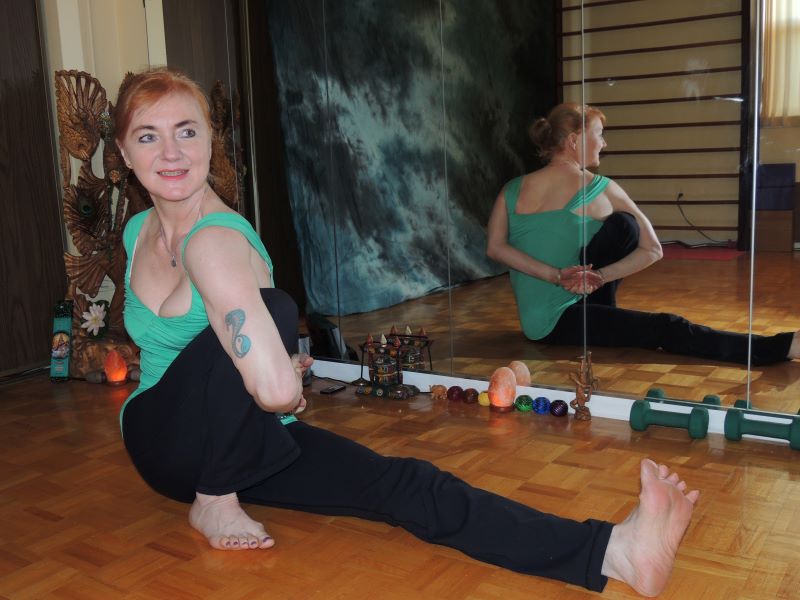
It is an advanced form that entails a deep twist and bind. Sit with your left leg extended, twist your upper body towards your right, and try to wrap your left arm behind the back of your right knee.
5. Pasasana (Noose Pose)
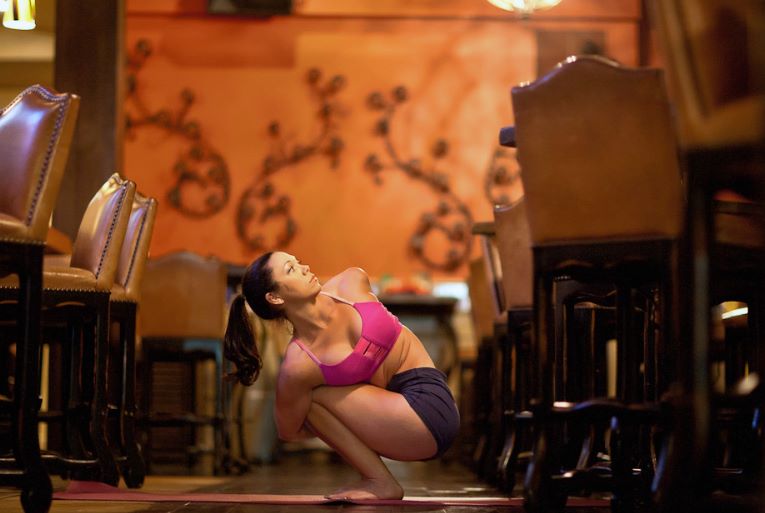
It is an advanced twist performed from a squatting position. Squat your feet together and twist your torso to the right. Now wrap your left arm around the outside of your thighs and pass it through between your under armpits. Then, put your right hand on the ground where the anterior part of your foot follows.
How to Perform Vakrasana?
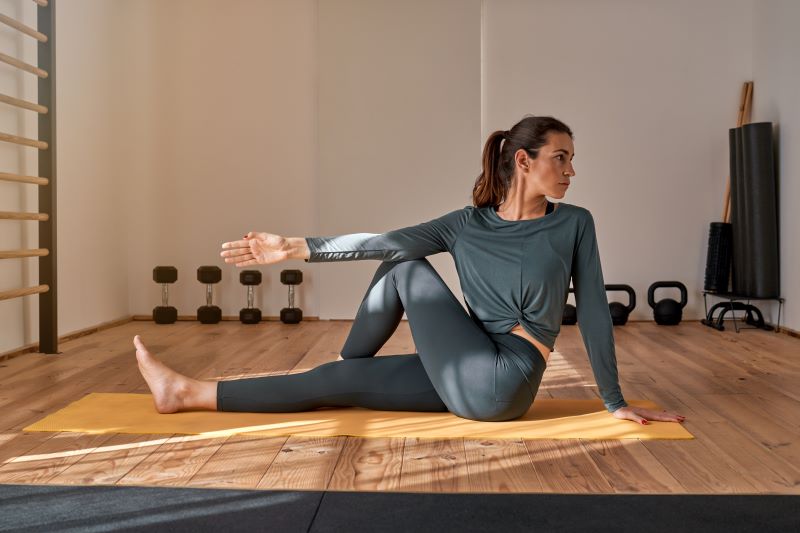
Since it is a complex exercise, you must follow the below steps to ensure you properly perform the exercise:
Step 1: Sit comfortably on your yoga mat or on the floor, keeping your spine straight and perpendicular to the floor.
Step 2: Stretch both your legs to the front and breathe.
Step 3: Bend your right leg at your knee, placing the foot at the side of your left leg. Do not forget to keep your knee straight and stretched properly.
Step 4: After this, place your right hand behind and rest your palms on the floor. Keep this in alignment with your right leg and away from your body.
Step 5: Breathe in slowly and place the left thigh on the right leg. Keep your elbows straight.
Step 6: Now breathe out and twist carefully to the right-hand part.
Step 7: Breathe normally, and do not rush into ending it. Hold this position for 2-3 minutes.
Step 8: Carefully and gently relax and exit from the posture to return to the original pose.
Step 9: Continue the process on the other side.
Things Required to Practise Vakrasana
Having the right equipment and setting is very important to experience a practical and comfortable practice of Vakrasana. Here are some things you might need:
- Yoga Mat: A good quality yoga mat provides cushioning and support, guaranteeing a non-slip surface for safe practice.
- Comfortable Clothing: Put on loose or stretchy clothes, enabling free movement without any restriction.
- Yoga Blocks: Blocks can help maintain balance and alignment, especially with limited flexibility.
- Yoga Strap: Beginners or people with tight muscles can also get into this pose by using a strap, which helps achieve and increase the twist.
- Bolsters or Cushions: When sitting for long durations or adjusting posture, bolsters or cushions may provide additional support and comfort.
- Peaceful Room: Having a serene environment is essential, as this will allow you to concentrate on your practice and reap the psychological benefits of the exercise.
- Bottle of Water: Drink plenty of water, so have some beside you to take small sips when necessary.
- Yoga Teacher or Instructional Videos: If you are new to Vakrasana, follow advice from a qualified yoga teacher or watch a good set of teaching videos.
8 Tips for Practising Vakrasana
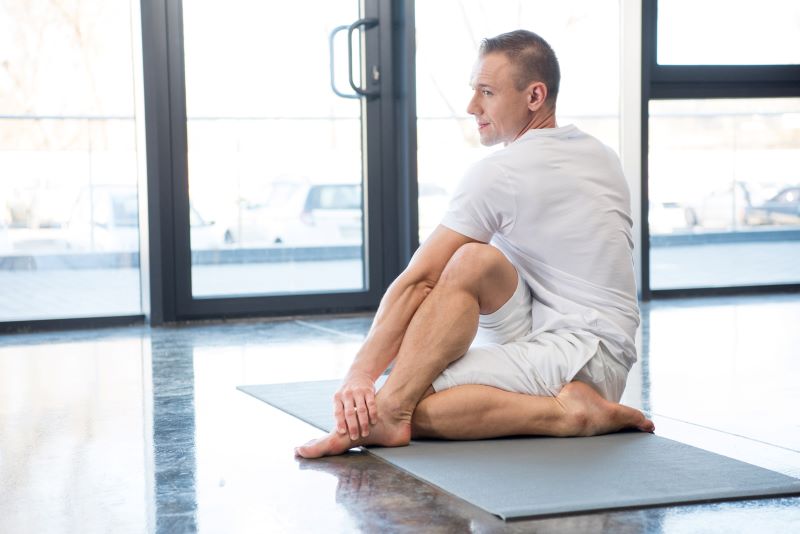
Vakrasana yoga is a challenging exercise and, therefore, requires expert supervision. Since there are twists and turns while performing this yoga posture, there are certain things you have to keep in mind before you begin the exercise:
- Warm-up First: Ensure you warm up your body before practising Vakrasana. You can engage in light stretches or go through some rounds of Surya Namaskar to help loosen up your muscles and joints for the turn.
- Sit Straight Up: Maintain an elongated spine while twisting. Do not curve or slouch your back, as this may weaken the effectiveness of the twist and put you at risk of injury.
- Know the Twists: Practising this exercise without knowing the exact twists and turns can be harmful. So, learn the twists first to perform the yoga correctly.
- Synchronise Your Breath: The side spinal twist posture allows you to synchronise your breath with the body. Ensure you exhale while twisting your body and inhale when you return to the original position.
- Sit on a Cushion: To support your hips on the ground, you can sit on a cushion or folded blankets. This will reduce the firmness of the ground hitting your hips and ensure a comfortable exercise.
- Focus Your Mind and Body: Do not get distracted while doing this yoga. Since it is a complex exercise, you must completely relax and focus your mind and body on it.
- Muscles Should Be Active: Ensure your muscles are active and your spine is erect when you perform this exercise. Otherwise, you will suffer sprains.
- Mind Your Alignment: Ensure even hips rest on the ground and avoid lifting one hip off the floor while doing twists. Proper alignment is important for maximising the benefits of Vakrasana.
Precautions and Contraindications of Vakrasana
As you are aware of the benefits of Vakrasana yoga, you must know that it comes with certain precautions and contraindications that you must follow:
As this yoga posture exerts pressure on your abdomen, you must avoid performing this exercise if you are pregnant.
If you suffer from extreme back pain, do not try this exercise, as this might worsen the situation.
Moreover, if you are suffering from an ulcer or hernia, it is better not to follow this exercise.
Try not to exert extreme pressure on the spinal regions as this might sprain the areas.
Try to align your shoulders at the same level during the yoga posture.
What are the Easy Modifications of a Vakrasana?
Here are the certain modifications of the half spinal twist:
- Use a Chair: You can practise this yoga posture seated on your chair. It would help if you sat sideways on a chair facing towards the right side.
- Try a Variation: Another variation includes performing the Half Lord of the Fishes pose, which is also a twisted posture. Moreover, you can also try the half-twist pose with the Sage Marichi pose, which involves similar twists but raises your palms.
- Try to Do It While Standing: You can practise this yoga posture by standing on the floor and keeping your feet almost 2-4 inches apart but parallel.
- Both Legs Must be Kept Straight: For those who find it difficult to flex one leg, straightening both legs can simplify the posture but still give a twist in the spine that is good for you.
- A Twist with Crossed Legs: The crossed-legged twist makes the posture more accessible to people who are uncomfortable sitting traditionally.
- Seated On Props: Using supports like yoga blocks or blankets under your hips while seated can enhance stability and alignment while twisting, making this pose easier for everyone.
- Lying Down Twist (Supta Vakrasana): A supine twist is less strenuous and more stimulating, thus assisting in gentle stretching and relaxation of back muscles.
So, now that you know about Vakrasana, its benefits, and the steps you can follow to practise, try to consult your trainer before beginning the pose. Also, stop continuing this exercise if you feel uncomfortable or in severe pain.
Who Should Avoid Doing Vakrasana?
Vakrasana has many benefits, but not all people can do it. Certain people should avoid this posture or, at best, consult their medical practitioner or a certified yoga teacher before trying it.
- Pregnancy: In pregnancy, twisting poses like Vakrasana put pressure on the abdomen and must be avoided so that no harm is done to the mother or baby.
- Recent Abdominal Surgery: The twist can increase stress on healing tissues after abdominal surgery, so it should be avoided if the patient has recently undergone it.
- Spinal Injuries: For example, herniated discs and deep twists like Vakrasana sometimes make these conditions worse and thus should not be attempted.
- Severe Back Pain: You should abstain from practising Vakrasana for severe back pain because twisting motions might aggravate the pain, causing hidden ailments.
- Hernia: People with a hernia should avoid doing Vakrasana because such twisting puts strain on the belly and worsens the condition.
- Peptic Ulcers: Deep twists like those in peptic ulcers will only worsen matters. This pose can exacerbate discomfort and disease itself in the case of peptic ulcers.
- Osteoporosis: If you have osteoporosis, be careful with twisted poses, as this may strain the spine and lead to fractures.
- High Blood Pressure: While doing Vakrasana, some twists can influence the blood flow, worsening the situation for those with high blood pressure.
- Menstruation: Some women avoid deep twisting poses at this time of the month since they might increase discomfort or worsen menstrual cramps.
- Acute Digestive Disorders: Twisted postures exert pressure on the abdomen; hence, it is better not to engage in acute digestive disorders.
- General Discomfort: If you feel general discomfort while performing Vakrasana, it would be a good idea not to engage in this asana.
Vakrasana is one of the most versatile and beneficial yoga asanas. It has various physical benefits, such as enhancing spinal flexibility, improving digestion, and mental advantages. Additionally, this pose is a good one to include in your yoga practice for relieving stress and helping you regain focus.
However, some health issues that may contraindicate this pose should be included, mainly if one requires support from an expert. As long as we identify its limitations when doing Vakrasana, we will maximise its use by living a healthier life.













